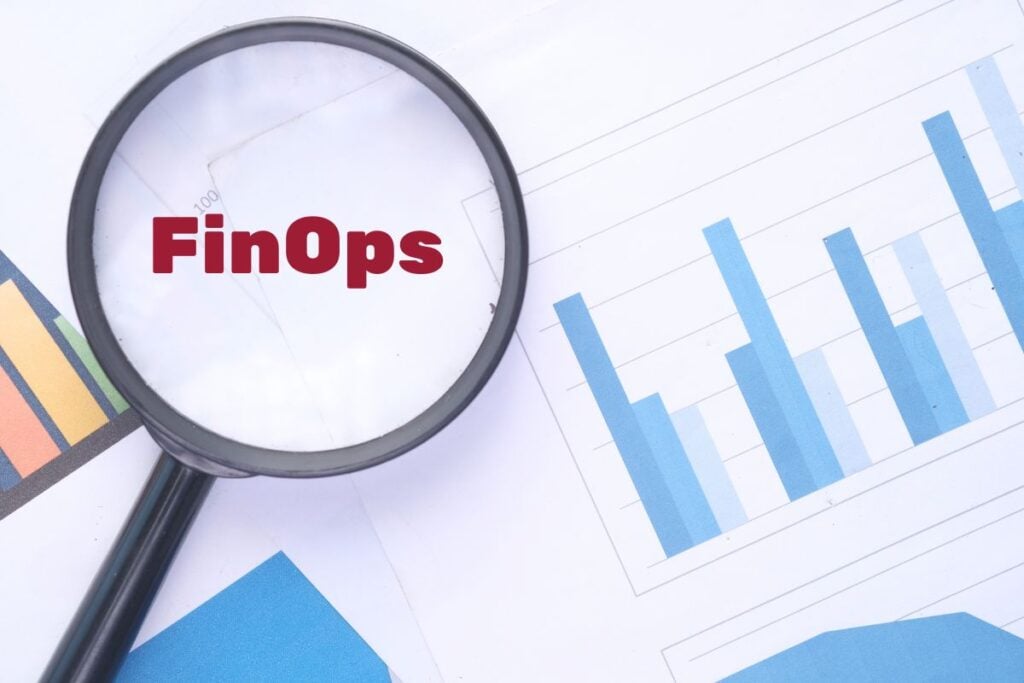The promise of cloud computing—infinite scalability and a pay-as-you-go model—has transformed how businesses operate. However, this revolutionary shift has also introduced a new, significant challenge: managing and controlling cloud costs. For many organizations, the dream of a lean, efficient infrastructure has been overshadowed by the reality of unpredictable and often spiraling cloud bills. FinOps: Cloud Financial Operations is a new cultural and operational framework that addresses this very problem. It’s a discipline that unites finance, technology, and business teams to manage cloud spending with a new level of efficiency, accountability, and insight. This article provides a comprehensive deep dive into the world of FinOps, exploring its core principles, the key drivers behind its rise, and the strategic roadmap for businesses to implement it successfully. By mastering FinOps, a company can turn its cloud from a financial liability into a powerful engine for innovation and growth.
The Genesis of FinOps

The need for FinOps is a direct result of the inherent challenges of managing cloud costs. Unlike traditional on-premises infrastructure with predictable, long-term investments, the cloud’s on-demand nature can lead to a phenomenon known as “cloud waste.” Studies have consistently shown that a significant portion of cloud spending is wasted, a problem that is both a financial drain and a barrier to a company’s digital transformation.
A. The Disconnect Between Teams: In many organizations, the teams that provision cloud resources—the engineers and developers—are not the ones who are paying the bill. This creates a fundamental disconnect. An engineer’s primary goal is to build and deploy an application as quickly as possible, and they are often not incentivized to think about the cost implications of their decisions. The finance team, on the other hand, is focused on the budget, but they often lack the technical knowledge to understand where the money is being spent.
B. The Epidemic of Idle Resources: One of the most common forms of cloud waste is idle and underutilized resources. This occurs when a virtual machine, a database, or a storage service is provisioned but is not being used. A developer may spin up a new server for a project and then forget to turn it off when the project is complete. A company may provision a massive database for a seasonal spike in traffic and then forget to downscale it when the traffic returns to normal. This waste is a low-hanging fruit for cost optimization.
C. Oversized and Inefficient Resources: Many businesses, in an effort to ensure their applications have enough power, provision more resources than they actually need. This “oversizing” can lead to a massive overspend. A virtual machine that is running at 10% of its capacity is a clear sign of waste. The key is to find the “Goldilocks zone,” where the resources are just right for the application’s needs, and to do so in an automated and consistent way.
D. The Complexity of Cloud Pricing: Cloud providers offer a complex array of pricing models, from on-demand to reserved instances and savings plans. A company that is not using the right pricing model for its workloads is likely overspending. Navigating this complexity requires a new level of expertise that is a core part of the FinOps discipline.
E. Lack of a “Culture of Cost”: Ultimately, the biggest problem is a lack of a “culture of cost.” In a world where a credit card can provision a massive server in a matter of minutes, a new level of accountability is needed. FinOps is a direct response to this, creating a culture where every employee, from the CEO to the junior developer, is aware of the cost implications of their decisions.
The Core Principles of the FinOps Framework
The FinOps Foundation, a non-profit organization dedicated to advancing the discipline, has established a clear framework built on three core principles: Inform, Optimize, and Operate. This framework is a roadmap for businesses to successfully implement FinOps.
A. Inform (Visibility and Accountability): The first principle of FinOps is to create a new level of visibility and accountability around cloud spending.
- Real-Time Dashboards: FinOps teams build real-time dashboards and reports that provide a clear and understandable breakdown of cloud spending. These dashboards are designed for different audiences, from the finance team to the engineering team.
- Tagging and Labeling: A key part of this is a clear and consistent tagging and labeling strategy. By tagging every cloud resource with a project, a team, and a business unit, a company can get a clear view of who is spending what, and on which project. This is the foundation of accountability.
- The “Cost Showback”: The concept of a “cost showback,” where a team is shown the cost of their cloud usage, is a powerful tool for driving a culture of cost. It creates a sense of ownership and accountability among the engineers and developers who are provisioning cloud resources.
B. Optimize (Drive Efficiency): The second principle is to use the data from the “Inform” phase to drive efficiency and optimize cloud spending.
- Automation and Governance: Automation is a key part of optimization. FinOps teams use automation to shut down idle resources, to downsize oversized instances, and to enforce a company’s cloud spending policies.
- Commitment-Based Discounts: FinOps teams work with the finance team to purchase reserved instances or savings plans for long-term, predictable workloads. These commitment-based discounts can offer a massive discount compared to on-demand instances.
- Architectural Optimization: FinOps is not just about a finance spreadsheet. It’s about a deep collaboration between the finance and engineering teams to optimize a company’s architecture. This could involve moving a workload to a more cost-effective service or using a serverless architecture for a workload that has unpredictable traffic patterns.
C. Operate (Continuous Improvement): The third and most important principle is to create a continuous feedback loop and a culture of continuous improvement.
- The FinOps Team: A FinOps team is a cross-functional team that includes a cloud engineer, a finance manager, and a product manager. This team meets regularly to review cloud spending, to identify new opportunities for optimization, and to provide feedback to the engineering and business teams.
- Cloud Spending as a KPI: The most successful companies in the FinOps world are those that use cloud spending as a key performance indicator (KPI) for their projects. For example, a project’s success is not just measured by its performance but by its cost-effectiveness.
- A Culture of Ownership: The ultimate goal is to create a culture of ownership, where every employee is an active participant in a company’s cloud cost management.
The New Tools and Technologies of FinOps

The FinOps revolution is being powered by a new generation of tools and technologies that are designed to automate compliance, optimize costs, and provide a new level of insight.
A. Cloud Provider Native Tools: The major cloud providers—AWS, Google Cloud, and Microsoft Azure—all offer a suite of tools to help you manage your cloud costs.
- AWS Cost Explorer: AWS Cost Explorer is a powerful tool that can give you a deep understanding of your AWS spending. You can use it to analyze your spending by service, by region, and by tag.
- Azure Cost Management and Billing: Azure Cost Management and Billing provides a similar set of tools for Azure.
- Google Cloud Billing: Google Cloud Billing provides a number of tools to help you manage and optimize your Google Cloud spending.
B. Third-Party FinOps Platforms: A number of third-party platforms have emerged that offer a more holistic view of cloud spending across multiple cloud providers.
- Centralized View: These platforms can provide a centralized view of a company’s cloud spending across AWS, Azure, and Google Cloud, which is a significant advantage for businesses that have a multi-cloud strategy.
- AI and Machine Learning: These platforms often use AI and machine learning to provide a new level of insights into cloud waste and to automate cost optimization efforts. For example, an AI system can analyze a company’s cloud spending and automatically recommend a pricing model that will save it money.
C. Automation and Governance Tools: The future of FinOps will be defined by a new generation of automation and governance tools.
- Policy as Code: The “policy as code” philosophy holds that a company’s cloud spending policies should be defined and managed in code. This allows for a more consistent and automated approach to compliance.
- Automated Remediation: A FinOps tool can be used to automatically remediate a cost violation. For example, if a developer provisions a new, high-cost instance without approval, the tool can automatically shut it down.
D. The Role of the Cloud Engineer: The role of the cloud engineer is changing from a technical expert to a strategic partner.
- FinOps as a Skill: The principles of FinOps will become a core skill for every cloud engineer. They will be expected to not only build a high-performing application but also a cost-effective one.
- Tools for Engineers: New tools are being developed to give engineers a more direct view of the cost implications of their decisions. This is a key part of driving a culture of cost.
The Strategic Roadmap for Implementing FinOps
Implementing FinOps is not a one-time project; it is an ongoing cultural and operational transformation. Here is a strategic roadmap for how a business can successfully implement FinOps.
A. Get Buy-in from Leadership: The first step is to get buy-in from the company’s leadership, including the CEO and the CFO. FinOps is a top-down initiative that requires a commitment from the highest levels of the organization.
B. Establish a Cross-Functional Team: FinOps is a team sport. A company must establish a cross-functional team that includes a cloud engineer, a finance manager, a product manager, and a business analyst. This team will be the engine of the FinOps transformation.
C. Gain Visibility and Accountability: The first project of the FinOps team should be to gain visibility and accountability. This includes:
- Tag Everything: Implement a clear and consistent tagging and labeling strategy.
- Build Dashboards: Build dashboards and reports that provide a clear view of cloud spending.
- Create a “Cost Showback”: Implement a “cost showback” to create a sense of ownership and accountability.
D. Prioritize Optimization Efforts: The next step is to prioritize optimization efforts. This includes:
- Eliminate Waste: The lowest-hanging fruit is the elimination of idle and underutilized resources.
- Right-Size Resources: Use a cloud monitoring tool to right-size your virtual machines and services.
- Leverage Discounts: Work with the finance team to purchase reserved instances or savings plans for long-term, predictable workloads.
E. Iterate and Automate: The final step is to create a continuous feedback loop and to automate everything you can. This includes:
- Regular Meetings: Hold regular meetings with the FinOps team to review cloud spending and identify new opportunities for optimization.
- Automate Policies: Use a FinOps tool to automate your cloud spending policies.
- Integrate with DevOps: Integrate FinOps into your DevOps workflow.
Conclusion
FinOps: Cloud Financial Operations is more than just a new industry term; it’s a new social contract for how we manage our cloud. It is a recognition that in an age of constant change and heightened scrutiny, companies must be more transparent, more accountable, and more committed to their legal and ethical obligations. The FinOps framework is the tool that is making this new social contract possible. By embracing these new principles, a company can not only mitigate its risk and save money, but it can also build a more trustworthy and sustainable business that is aligned with the values of the modern world. The future of cloud computing is not just about innovation; it’s about integrity, and FinOps is a critical part of that story. The journey is just beginning, and the story of FinOps’s next chapter is one that will be written by all of us.












